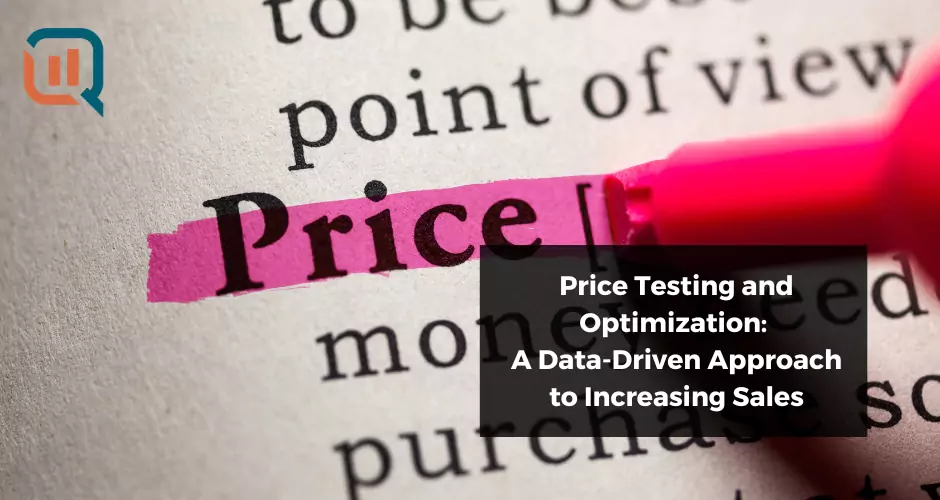Price optimization is the art of discovering the perfect price point for your product or service, ultimately maximizing your company’s profitability.
While many businesses believe they’ve already mastered pricing strategies, embracing price optimization can propel them to greater profitability and a larger market share. In this article, we delve into the mechanics of price optimization and its potential benefits for your business.
What is Price Optimization?
Price optimization is the quest for the ideal price tag for your product or service, one that optimizes your company’s profits. Companies employ a variety of methods, including customer surveys, data analysis, and trial and error, to pinpoint this optimal price.
The merits of price optimization are plentiful:
- Enhanced Profitability: Price optimization can significantly boost your profits.
- Competitive Pricing: It enables you to offer more competitive prices to your customers.
- Improved Customer Satisfaction: Customers are more content when they perceive they’ve paid a fair price for their purchase.
An Overview of A/B testing
A/B testing or split testing is a tool used for optipricing. It helps us judge which of two webpage versions works better. The goal is to see which one gets the best user response. So, businesses can make informed decisions. They better their game plan to boost conversions, user activity, and overall wins. There are many ways it affects conversion rates, user experience, customization, and hypothesis checking. It even helps you keep up in the competitive market. Let us understand A/B testing’s different sides and share tips for better customer gathering and increased sales.
The Significance of A/B Price Testing Strategies
A/B price testing strategies play a pivotal role in maximizing marketing endeavors, offering numerous crucial advantages:
- Enhancing Conversion Rates
A/B testing strategies are pivotal in enhancing conversion rates by helping businesses identify the most effective elements of their marketing campaigns. Through experimentation with various versions of landing pages, call-to-action buttons, headlines, or images, companies gain valuable insights into what resonates most with their target audience and data visualization.
- Optimizing User Experience
A/B testing strategies play a crucial role in delivering a seamless and enjoyable user experience. By experimenting with different website layouts, navigation menus, or checkout processes, companies can identify pain points and friction areas that may hinder user engagement. For instance, an online travel agency can conduct A/B tests to compare the effectiveness of a multi-step booking process versus a simplified one-page checkout.
- Personalizing Marketing Efforts
A/B testing strategies enable businesses to personalize their marketing efforts based on various data insights. Through audience segmentation and testing variations of emails, subject lines, or promotional offers, companies can tailor their messaging to resonate with specific customer segments. Consider a clothing retailer aiming to promote a new collection to its customer base.
By conducting A/B tests on different email designs and subject lines, they can identify the combination that leads to higher open rates and click-through rates for different segments, such as male versus female customers or various age groups. This approach allows them to send targeted and personalized content, increasing the chances of conversions and customer loyalty.
- Validating Hypotheses and Innovations
A/B testing is an invaluable tool for validating hypotheses and price testing innovative concepts before full implementation. It provides a structured framework for businesses to gauge the impact of changes on vital metrics. Users are randomly assigned to experience either the existing onboarding flow or a new one.
By measuring user engagement, retention rates, and customer satisfaction, businesses can objectively determine the effectiveness of the change. This approach mitigates the inherent risks associated with significant alterations and ensures decisions are grounded in data rather than subjective opinions.
5. Staying Ahead of Competitors
A/B testing strategies empower businesses to maintain a competitive edge by continually tests and price optimization their marketing initiatives. This ongoing process unveils innovative approaches and hidden opportunities that competitors may overlook. For example, a food delivery service can experiment with various discounts or incentives to attract new customers. By closely monitoring the results of A/B tests, they can swiftly adapt and refine their strategies, positioning themselves advantageously in the market.
Conclusion
In summary, A/B testing strategies are indispensable for businesses aiming to fine-tune their customer acquisition efforts. They enhance conversion rates, improve user experiences, personalize marketing endeavors, validate hypotheses, and ensure a competitive edge. A/B testing pricing strategies enhances revenue, customer insights, and decision-making. It’s a competitive edge to maximize profitability and meet customer expectations, fostering sustainable growth and success.
